Pharmacological restriction of genomic binding sites redirects PU.1 pioneer transcription factor activity
- PMID: 39294495
- PMCID: PMC11525197
- DOI: 10.1038/s41588-024-01911-7
Pharmacological restriction of genomic binding sites redirects PU.1 pioneer transcription factor activity
Abstract
Transcription factor (TF) DNA-binding dynamics govern cell fate and identity. However, our ability to pharmacologically control TF localization is limited. Here we leverage chemically driven binding site restriction leading to robust and DNA-sequence-specific redistribution of PU.1, a pioneer TF pertinent to many hematopoietic malignancies. Through an innovative technique, 'CLICK-on-CUT&Tag', we characterize the hierarchy of de novo PU.1 motifs, predicting occupancy in the PU.1 cistrome under binding site restriction. Temporal and single-molecule studies of binding site restriction uncover the pioneering dynamics of native PU.1 and identify the paradoxical activation of an alternate target gene set driven by PU.1 localization to second-tier binding sites. These transcriptional changes were corroborated by genetic blockade and site-specific reporter assays. Binding site restriction and subsequent PU.1 network rewiring causes primary human leukemia cells to differentiate. In summary, pharmacologically induced TF redistribution can be harnessed to govern TF localization, actuate alternate gene networks and direct cell fate.
© 2024. The Author(s).
Conflict of interest statement
U.S. has received research funding from GlaxoSmithKline, Bayer Healthcare, Aileron Therapeutics and Novartis; has received compensation for consultancy services and for serving on scientific advisory boards from GlaxoSmithKline, Bayer Healthcare, Celgene, Aileron Therapeutics, Stelexis Therapeutics and Pieris Pharmaceuticals; and has equity ownership in and is serving on the board of directors of Stelexis Therapeutics. The other authors declare no competing interests.
Figures
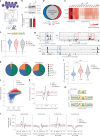


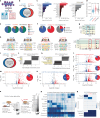
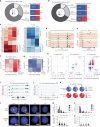

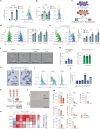










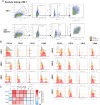
References
-
- Lambert, S. A. et al. The human transcription factors. Cell172, 650–665 (2018). - PubMed
-
- Perry, J. A., Seong, B. K. A. & Stegmaier, K. Biology and therapy of dominant fusion oncoproteins involving transcription factor and chromatin regulators in sarcomas. Annu. Rev. Cancer Biol.3, 299–321 (2019).
-
- Henley, M. J. & Koehler, A. N. Advances in targeting ‘undruggable’ transcription factors with small molecules. Nat. Rev. Drug Discov.20, 669–688 (2021). - PubMed
-
- Zhang, P. et al. PU.1 inhibits GATA-1 function and erythroid differentiation by blocking GATA-1 DNA binding. Blood96, 2641–2648 (2000). - PubMed
MeSH terms
Substances
Grants and funding
LinkOut - more resources
Full Text Sources
Molecular Biology Databases
Miscellaneous

